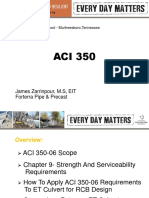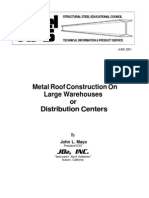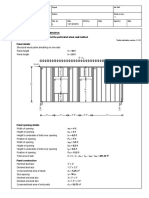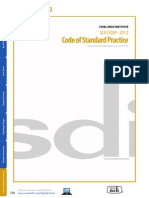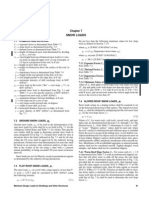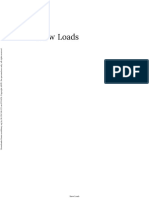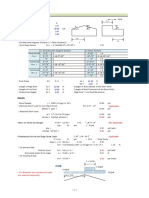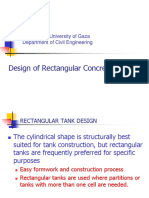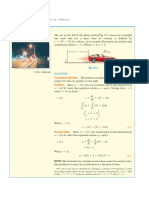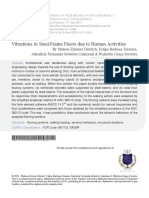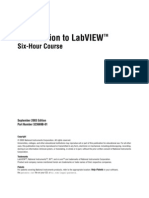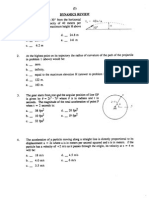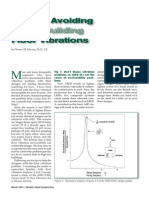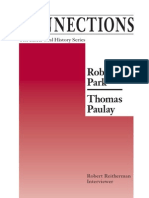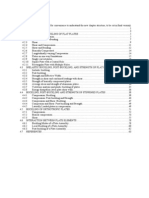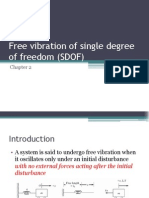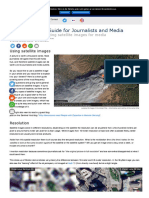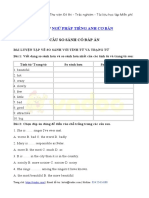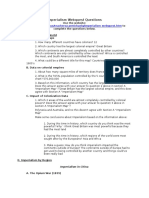Determining Snow Loads Determining Snow Loads
Introduction
Most building codes reference the procedures in ASCE 7 - Chapter 7
See your handout
Roof snow loads are based on the historical records for ground snow loads
we dont usually have records of roof snow levels
Ground snow loads are converted to roof snow load using the equations in ASCE 7
� Flat Roof Snow Load calculated by:
p f = 0 .7 C e C t I p g
pff = flat roof snow load, psf Ce = Exposure factor e Ctt = Thermal factor I = Importance factor pg = ground snow load, psf g
Flat Roof defined by: < 5 degree slope
pg = ground snow load, psf g
ground snow load comes from maps in ASCE 7
�Ground Snow Data
Ground snow data are provided on map of US in ASCE 7
50-yr recurrence interval = 2% annual probability of occurrence
Certain areas on the map need case study to determine ground snow load - designated by CS
usually in mountainous terrain parentheses indicate that above that elevation, a case study is required many municipalities in mountainous regions have local snow data
Ground Snow Loads
ASCE 7: Figure 7-1
�4th Secret to Success in this Course
Know your geography. Dont ask the professor where to find places on the map.
� Ce is Exposure Factor
found in ASCE 7, Table 7-2 based on terrain category in 6.5.6
A = large city centers, 50% of buildings have heights > 70 ft B = urban or suburban areas C = flat open country, grasslands, shorelines in hurricane prone areas D = flat open areas around waterways, lakes, etc.
� Ct is Thermal Factor
I is Importance Factor
�� I is Importance Factor
Minimum values for pf: when pg < 20 psf; psf; when pg > 20 psf; psf; pf = I pg pf = I (20 psf) psf)
Minimum values of pf apply to low sloped roofs also
� Sloped Roof Snow Load calculated
by:
p s = Cs p f
ps = sloped roof snow load, psf s Cs = Slope factor s pff = flat roof snow load, psf
Cs is Slope Factor
found in ASCE 7, Figure 7-2 based on thermal condition of roof
Warm roof defined by Ct =1.0 Cold roof defined by Ct > 1.0 Slippery surface allows snow to slide off roof surface
� Cs Slope Factor
for roof with Ct =1.1, interpolate between values in both figures
� Curved Roofs
o Curved roofs with slopes > 70o are considered free of snow
Cs = 0 Balanced snow loads for curved roofs are determined by Figure 7-3 7-3
�� Multiple folded plate, sawtooth, barrel vault roofs
Use flat roof snow load
Cs = 1
Continuous Beam Roofs
Figure 7-4 shows how to distribute snow on continuous beam roof systems
� Unbalanced Snow Loads
Unbalanced snow loads are created by wind blowing snow
WIND
� Unbalanced Snow Loads
The roof structure needs to be designed for both balanced and unbalanced loads Section 7.6 shows how to determine unbalanced snow loads
o Hip and gable roofs with slope > 70o or o with slope < (70/W + 0.5)o dont need to be considered
� Unbalanced Snow Load Terms
0.5 L = 0.33 + 0.167 W 1 .0
Snow density
for
L 1 W L for 1 < 4 W L >4 for W
= 0.13 p g + 14
�Example
Given: Fire station in Muscle Shoals, AL Find: balanced and unbalanced snow loads on building
�� Flat Roof Snow Pressure
� Ct is Thermal Factor
I is Importance Factor
� Flat Roof Snow Pressure
Sloped Roof Snow Pressure
� Sloped Roof Snow Pressure
� Check unbalanced snow load consider roof slope consider building length, width, snow density, etc.
��� Conclusion:
Balanced snow load
8.4 psf
8.4 psf
Unbalanced snow load 2.5 psf / 12.1 psf
2.5 psf
12.1 psf






